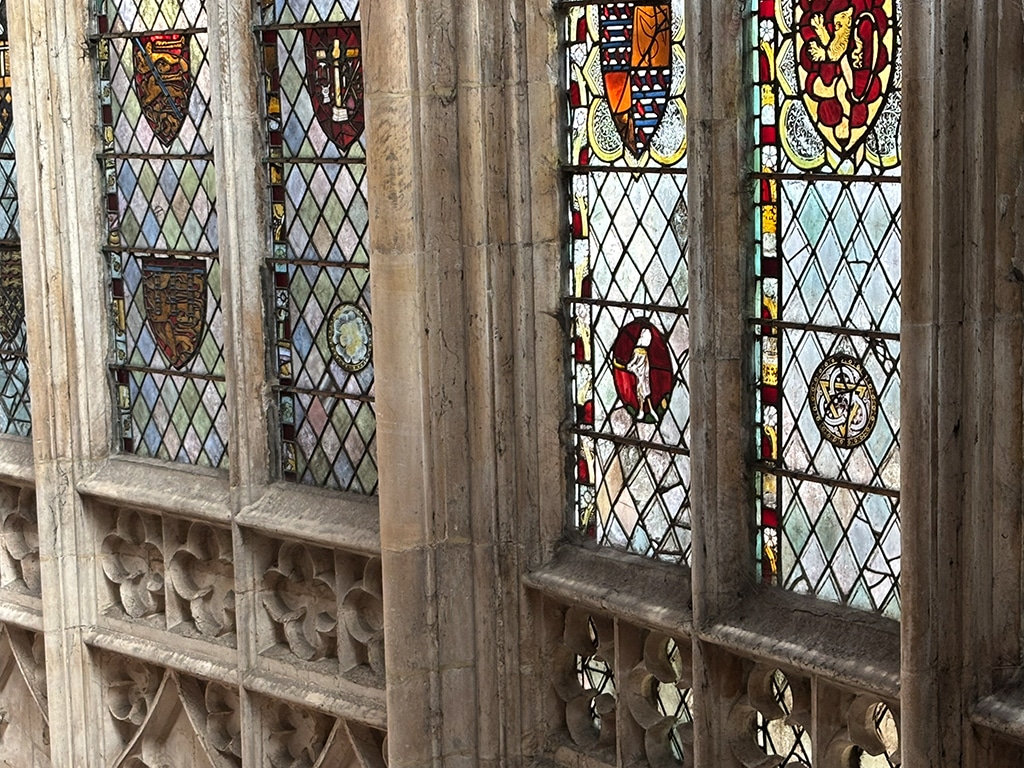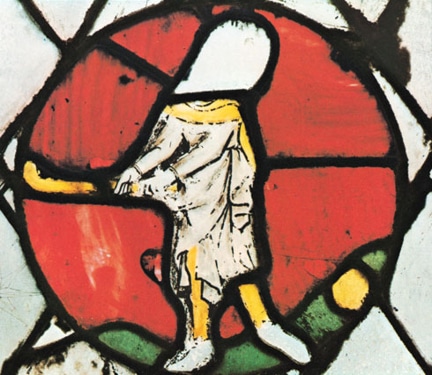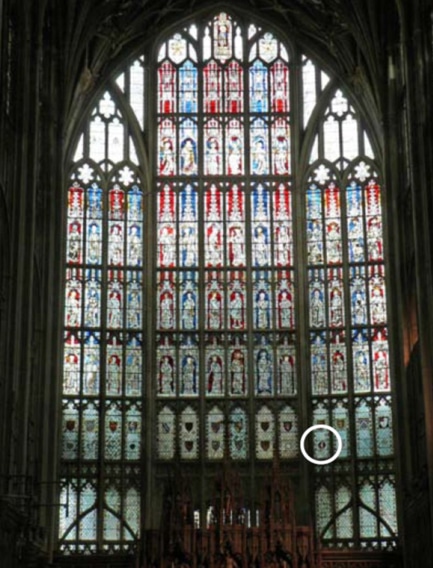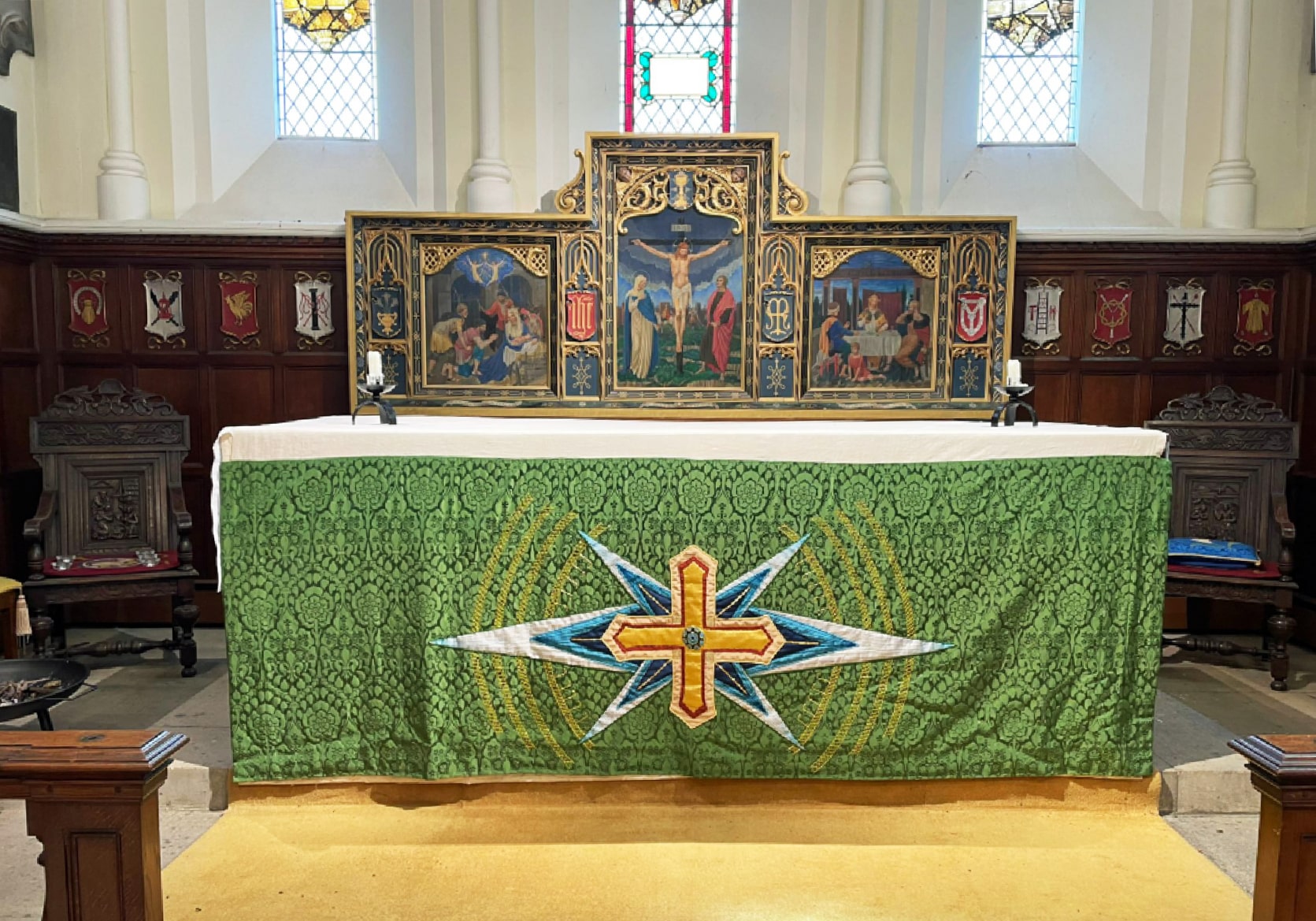Gloucester Cathedral, or the Cathedral Church of St Peter and the Holy and Indivisible Trinity, was built in 1100 as a Norman abbey church. It has one of the largest medieval stained glass windows in England, known as the Great East Window. It measures 22 x 10.4 metres.
The window dates from c.1350 and commemorates the Battle of Crecy in Northern France in 1346. It depicts the Coronation Of The Virgin, and the figures consist of winged angels, apostles, saints, kings, and abbots. The armorial shields in the lower lights are those of King Edward III, the Black Prince, whose knightly companions and others who took part in the victory at Crecy, and who in some degrees were connected with Gloucestershire.
Among the armorial shields in the lower right side of the window is a medallion of about 60 cm in diameter showing a man – known as ‘the Crecy man’ – apparently preparing to strike a ball with a curved stick (see images below). There are many theories about who this man is and what game he is playing. Some believe this is a portrait of the maker of the glass window – a kind of signature – and that he was not living far from Gloucester. Other claims suggest that the window was made in Rouen, but as England was at war with France it is unlikely that the order for the manufacture of the window would be awarded to a Frenchman.
If the artist was a local man from Gloucestershire, he might be playing similar to bandy-ball – the local game of ‘Not’ – which is described in Grose’s Provincial Glossary from 1787 as, “A game used in Gloucestershire, where the parties, ranged on opposite sides, with each a bat in their hands, endeavour to strike a ball to opposite goals. The game is called not, from the ball being made of knotty piece of wood.”
Other theories suggest that the man is playing the old English game of ‘cambuca’ or, if the window was made on the continent, the French ‘choule à la crosse‘ or the Dutch ‘colf‘.
Whatever form or derivative of hockey it may be, the image presents a very lifelike stance of a hockey player. Indeed, there is speculation that it came from a medieval coaching manual! It is even more impressive as it is crafted from stained glass, which is not the most exact art form.
Very grateful acknowledgements to Carl Giden and Patrick Houda of The Society for International Hockey Research (SIHR).











